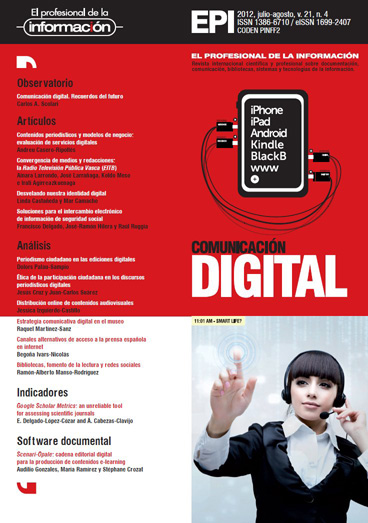Risk communication and food safety in the 2.0 age
DOI:
https://doi.org/10.3145/epi.2012.jul.08Keywords:
Communication, Risk, Benefit, Food security, Feeding, Social media, FoodRisC, Channel, Message, Source.Abstract
In recent decades, after several crises, the communication of risk has acquired special importance for those responsible for food safety. Public distrust has led the EU to base their communications strategy on scientific information. In spite of the institutionalization and professionalization of risk communication, the results have not been those foreseen in the new media environment. The explosion of social media or web 2.0 has created digital cultures with new concepts of risks and benefits. For the institutions, the social media add new problems to the traditional communication of risk: they feel obliged to participate in the virtual environment, but at the same time they are afraid to lose control of both the message and legitimacy, and they don´t know how to talk to users. Institutions still consider social media as an uncertain opportunity.
Downloads
Downloads
Published
How to Cite
Issue
Section
License
Dissemination conditions of the articles once they are published
Authors can freely disseminate their articles on websites, social networks and repositories
However, the following conditions must be respected:
- Only the editorial version should be made public. Please do not publish preprints, postprints or proofs.
- Along with this copy, a specific mention of the publication in which the text has appeared must be included, also adding a clickable link to the URL: http://www.profesionaldelainformacion.com
- Only the final editorial version should be made public. Please do not publish preprints, postprints or proofs.
- Along with that copy, a specific mention of the publication in which the text has appeared must be included, also adding a clickable link to the URL: http://revista.profesionaldelainformacion.com
Profesional de la información journal offers the articles in open access with a Creative Commons BY license.




